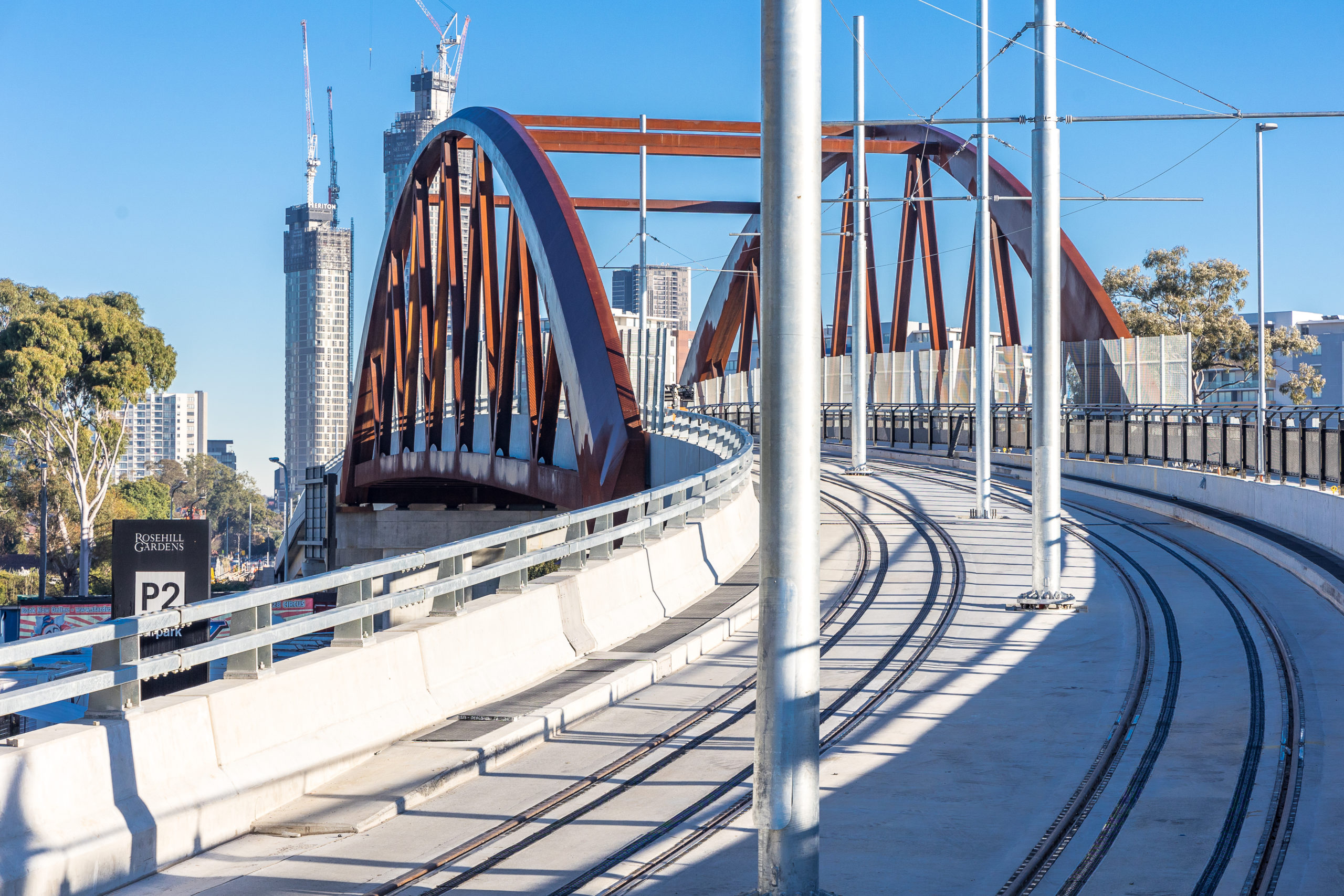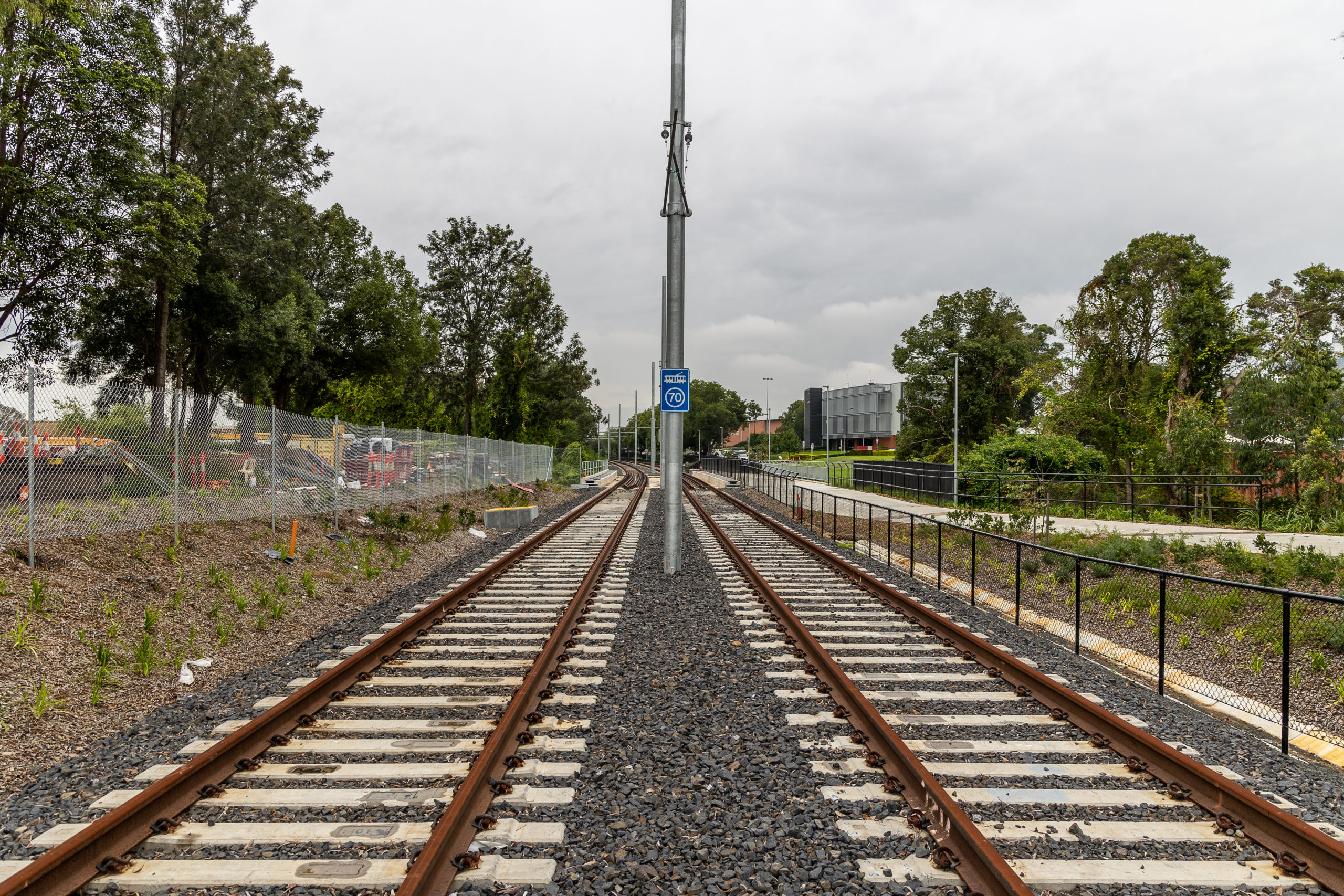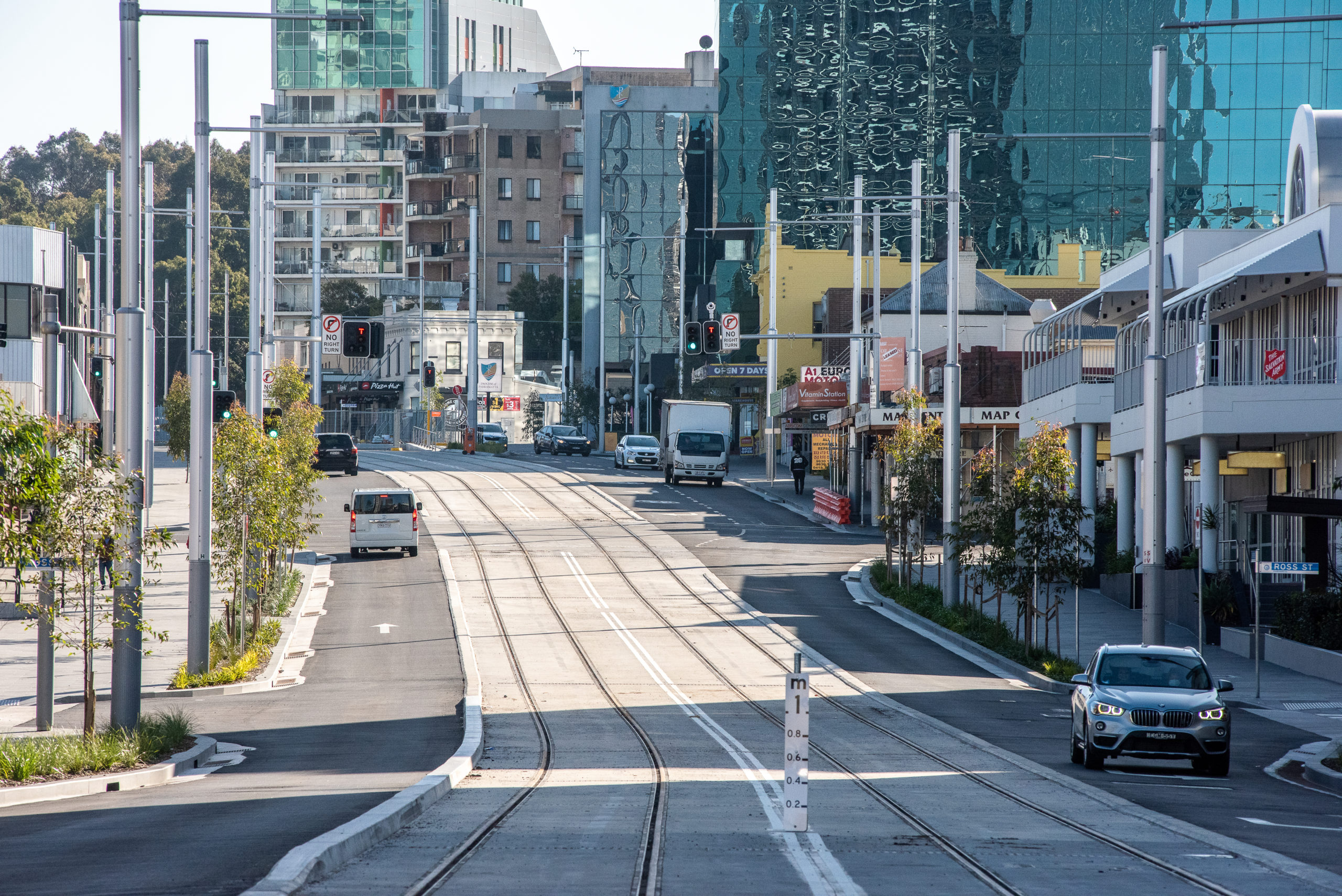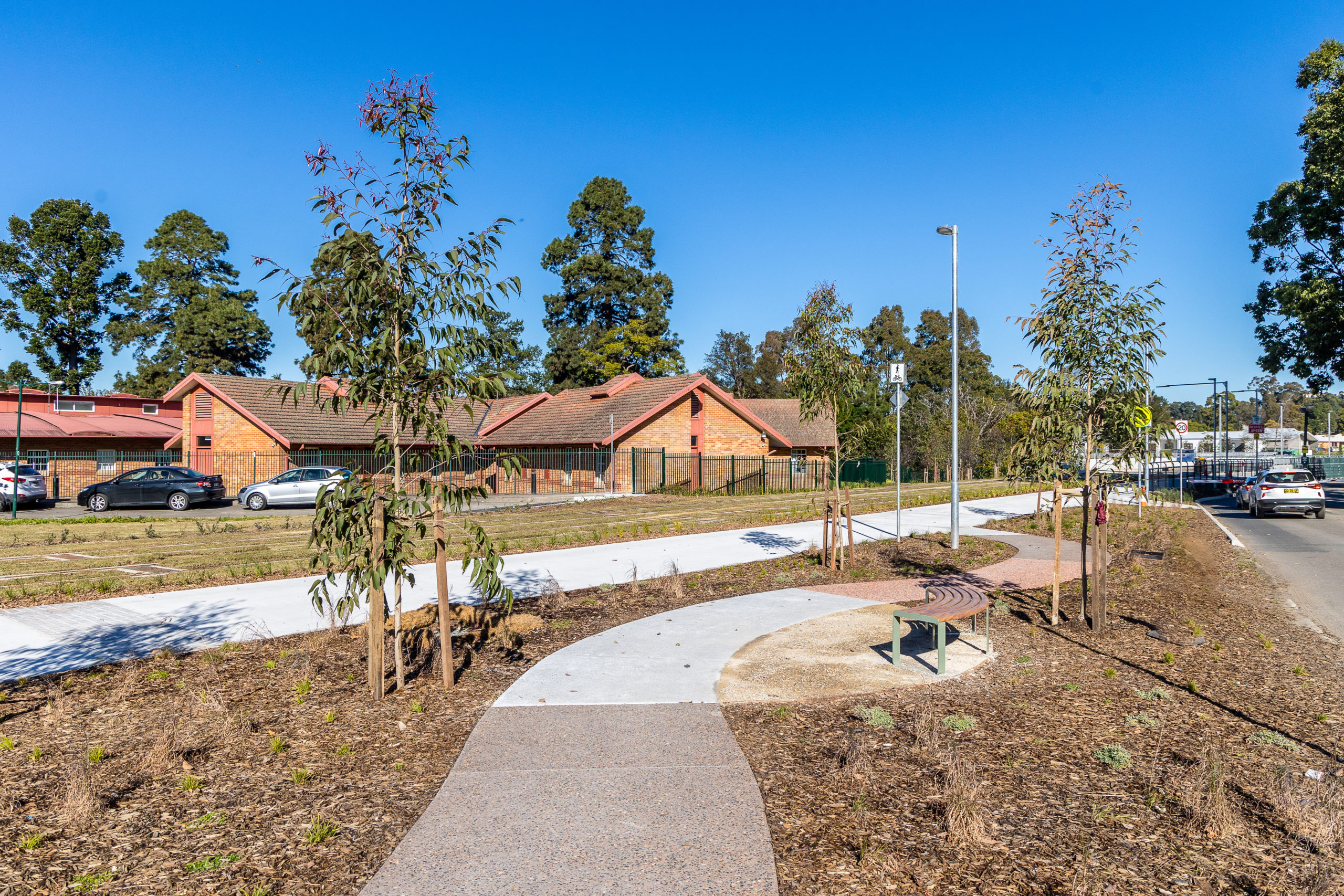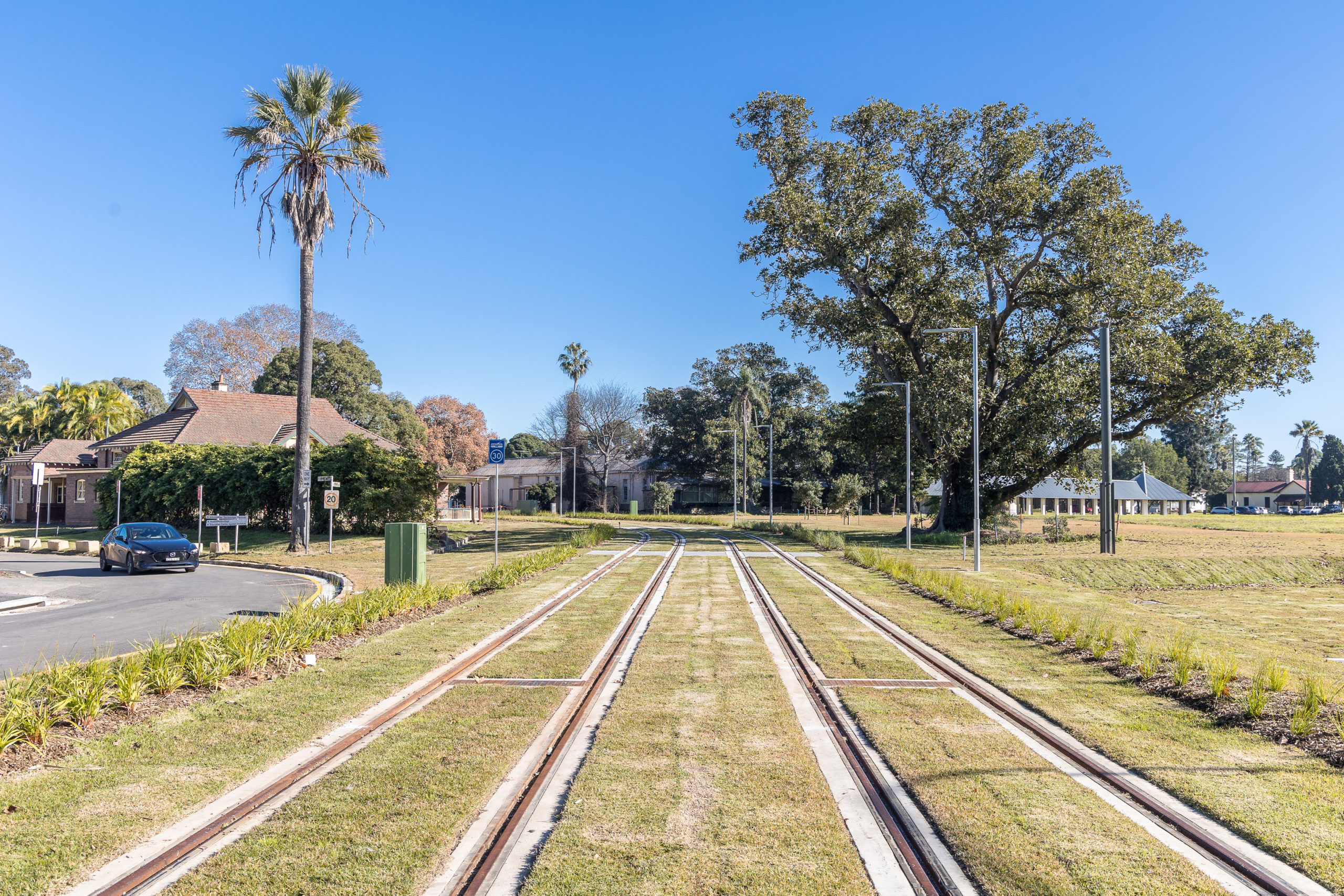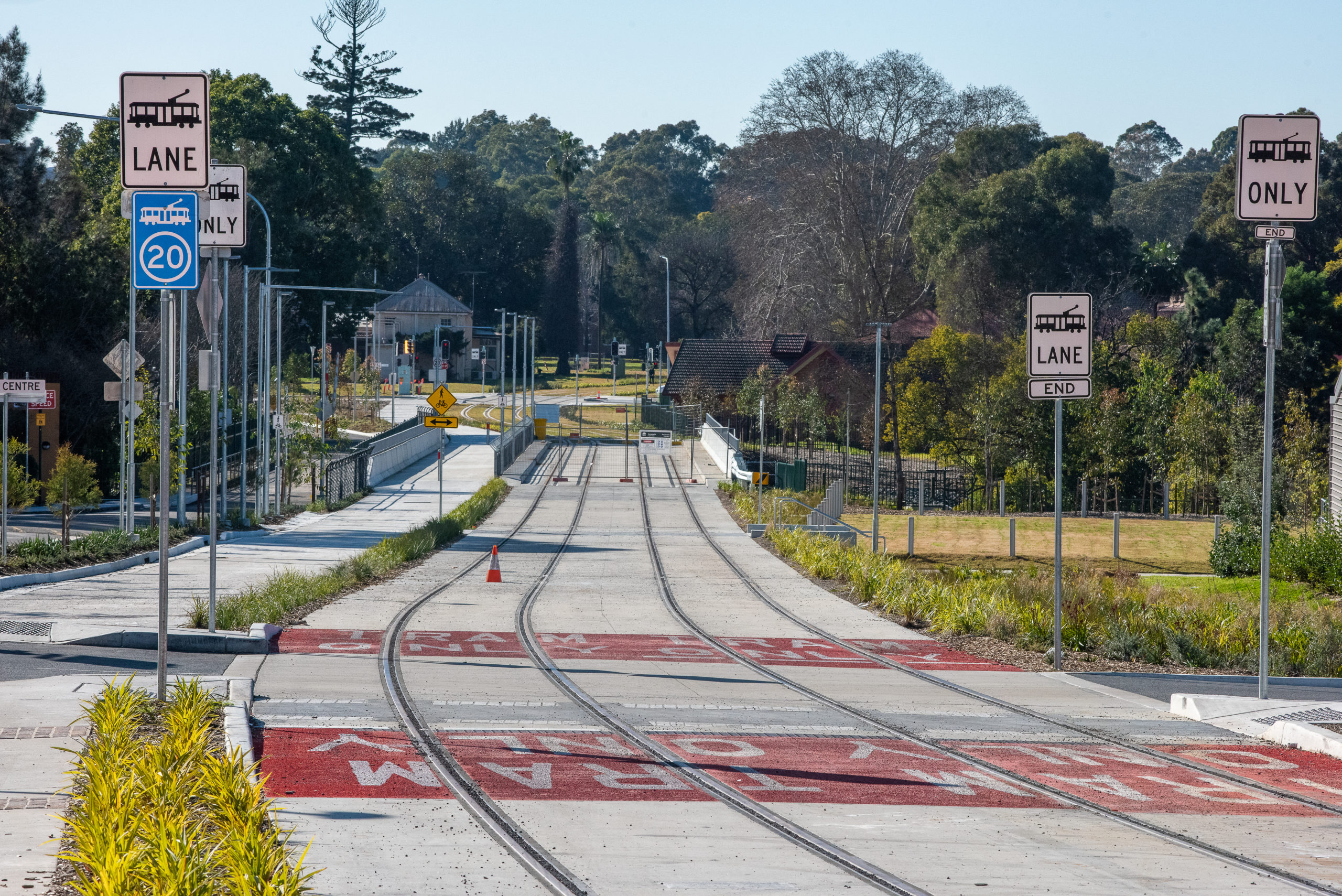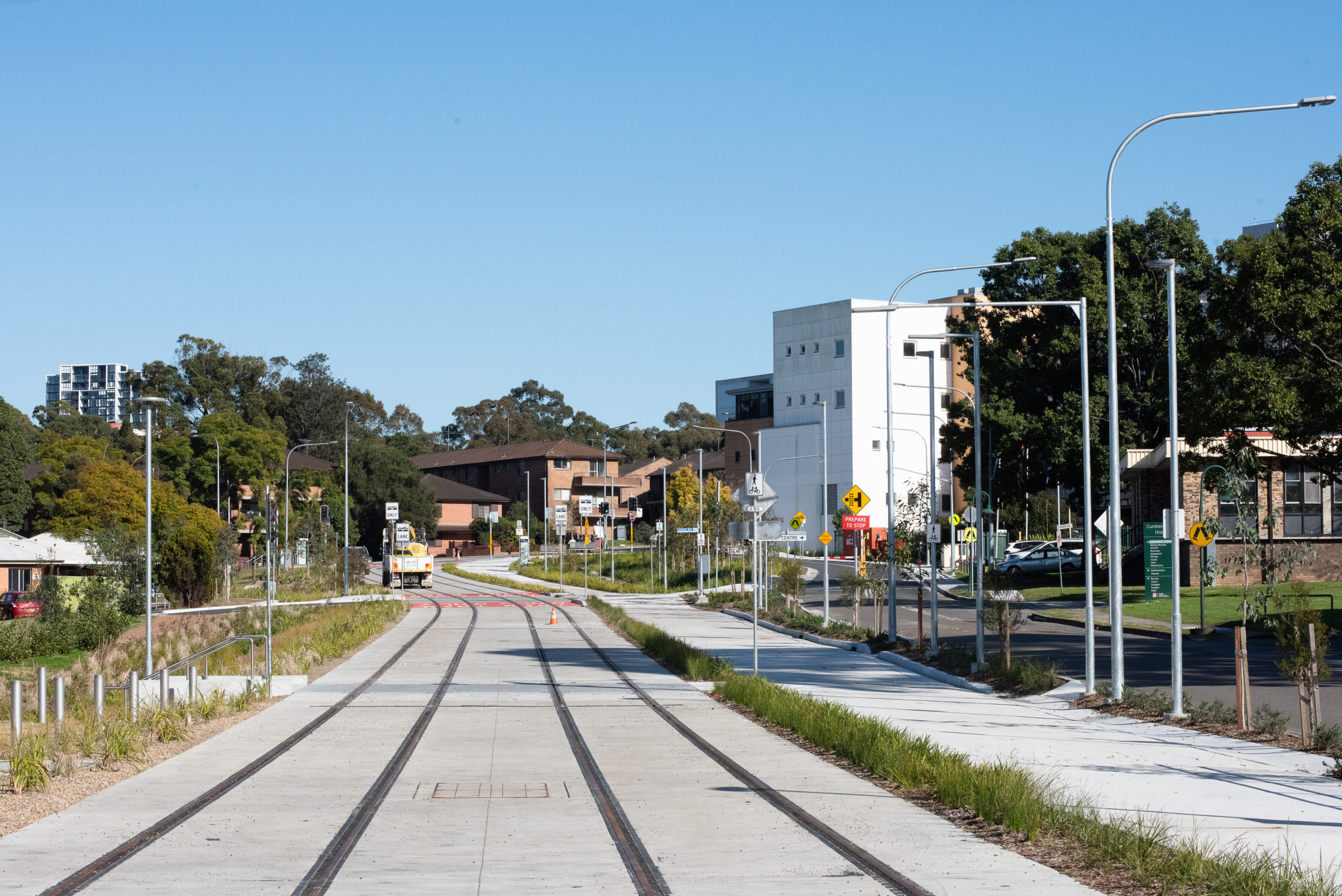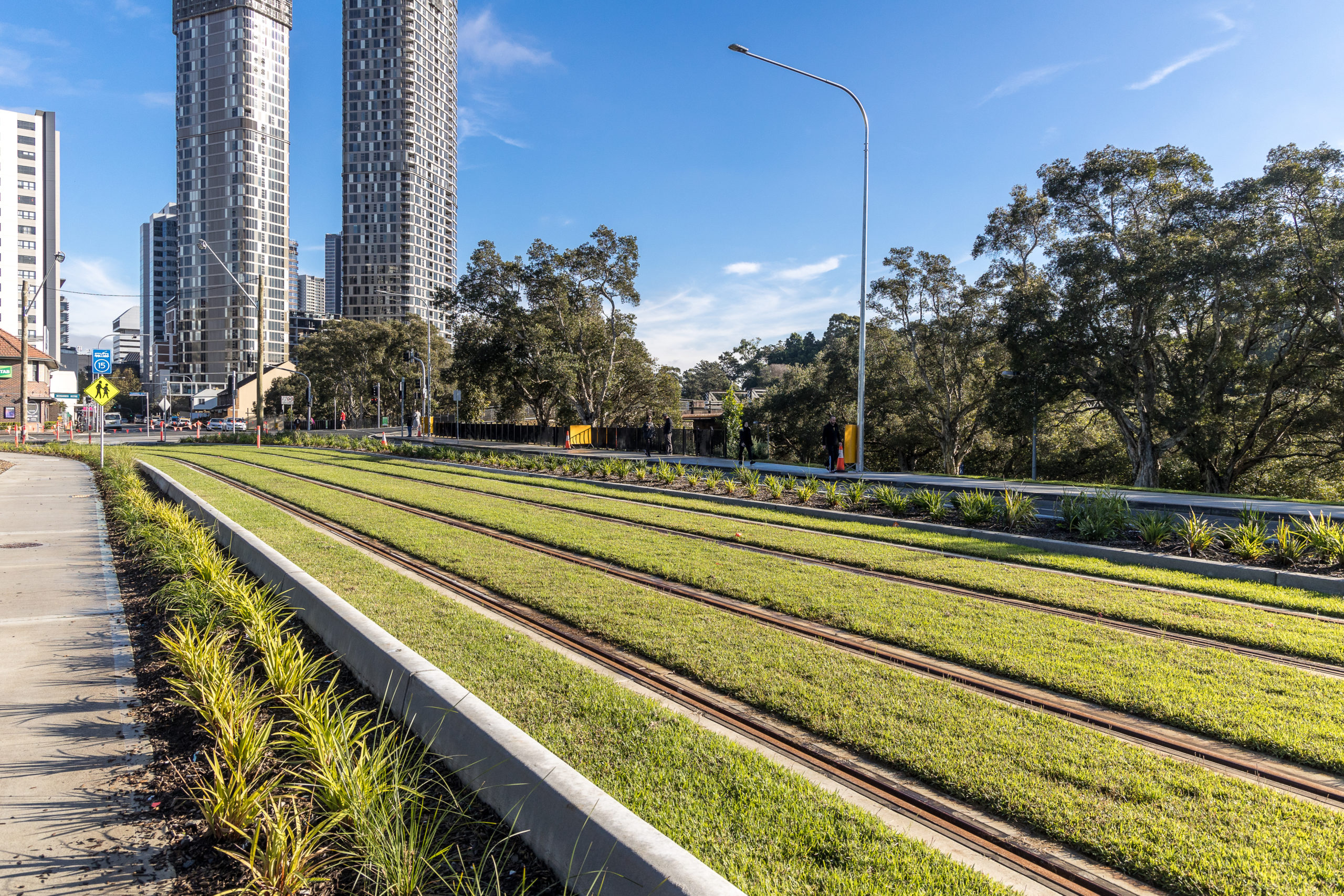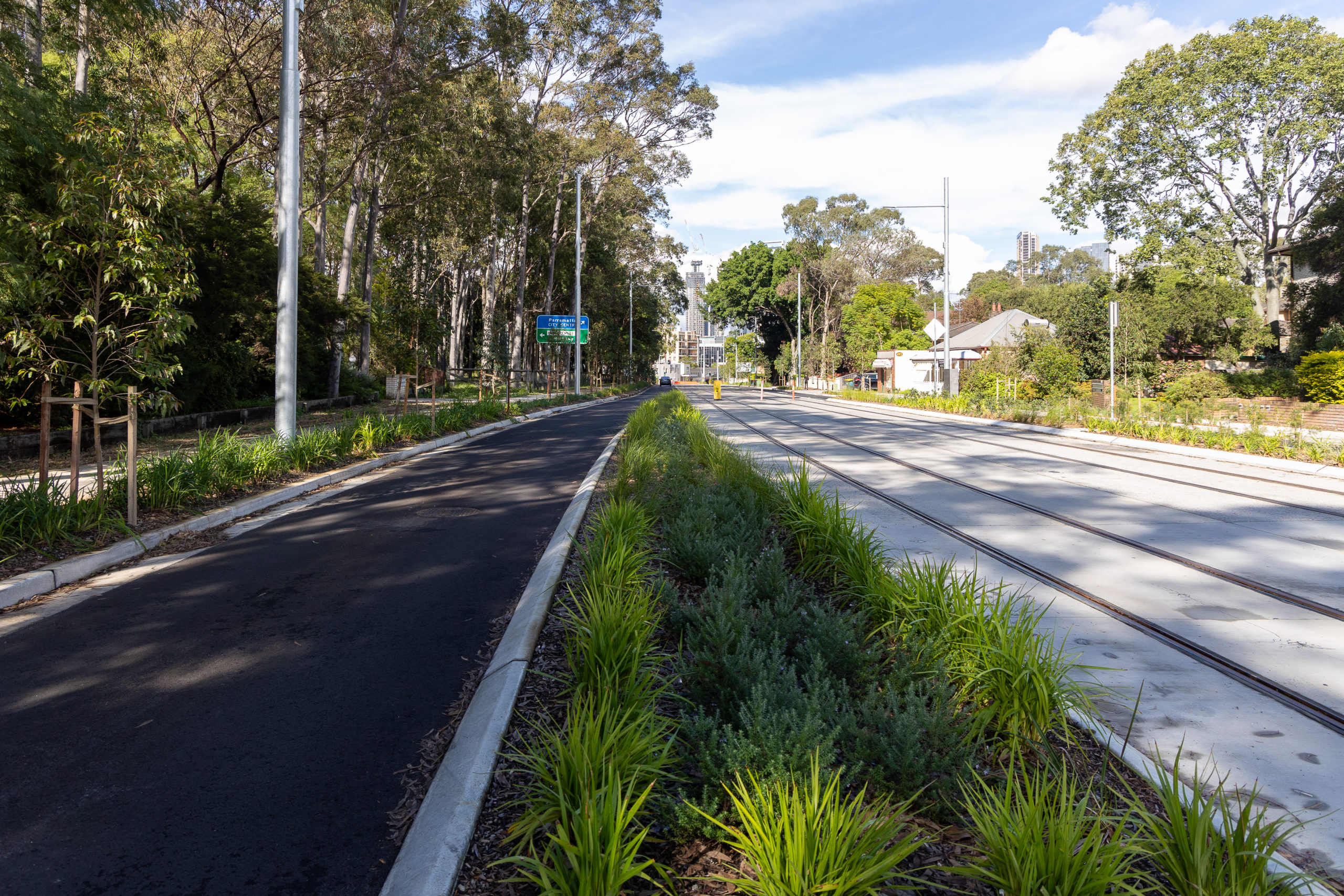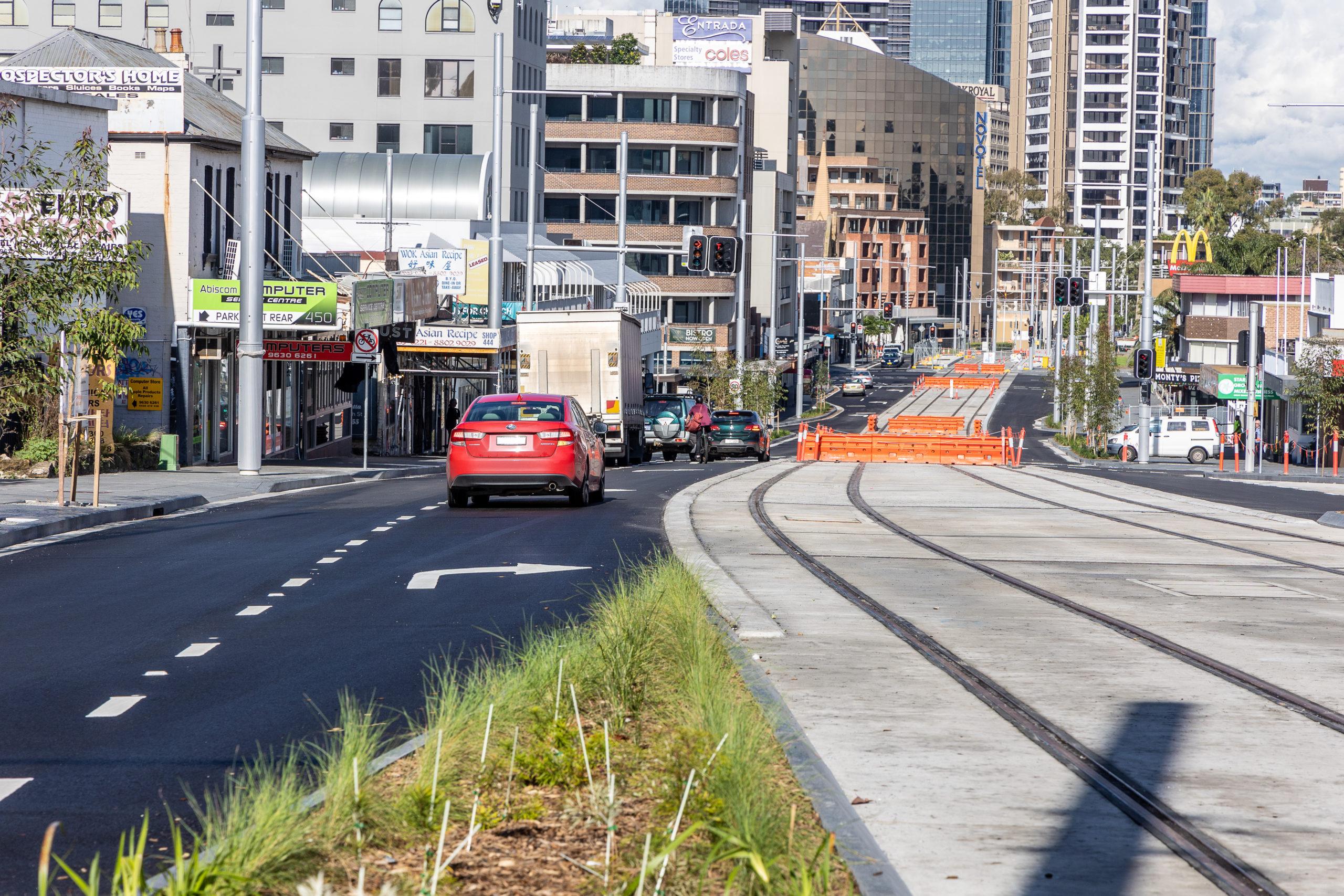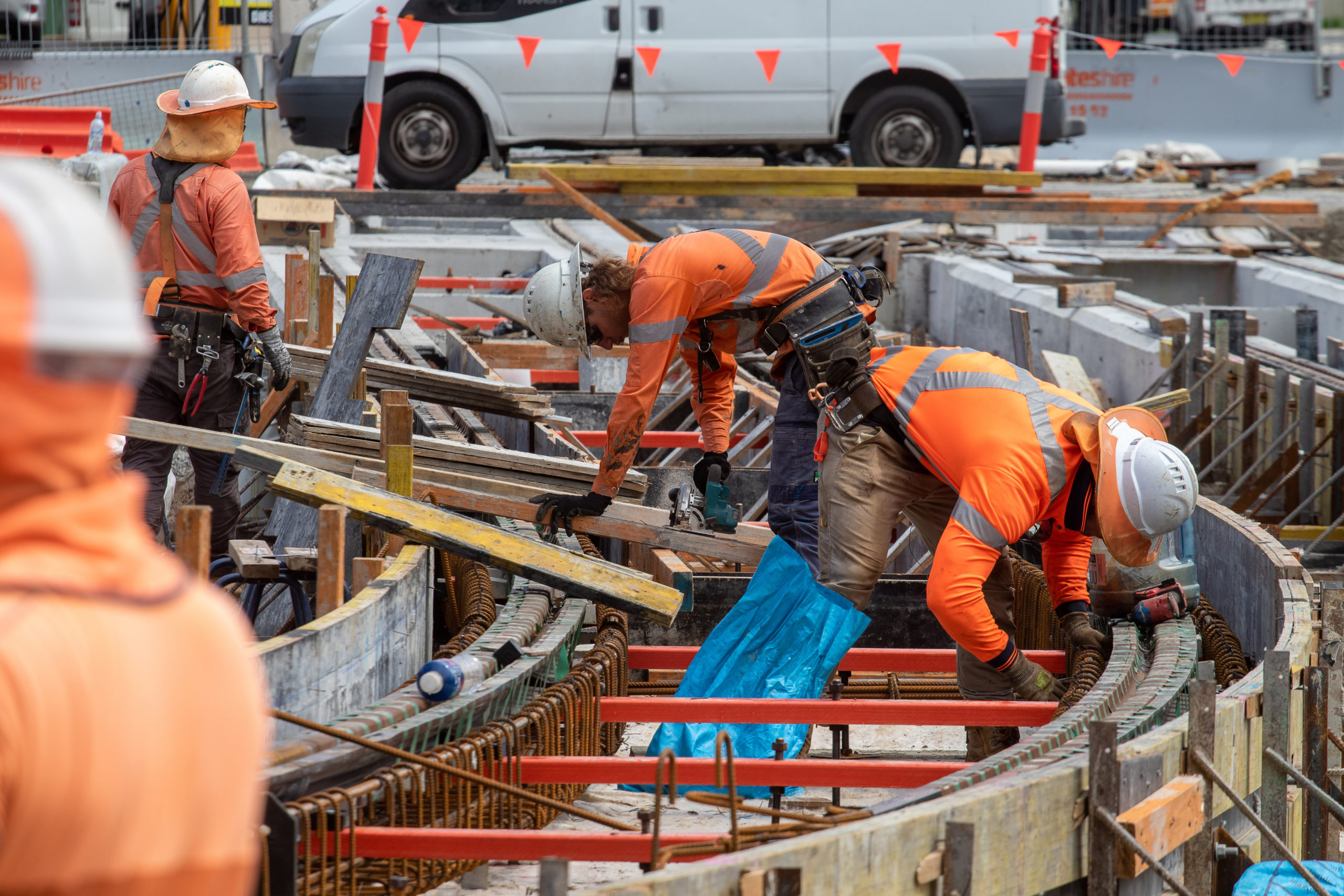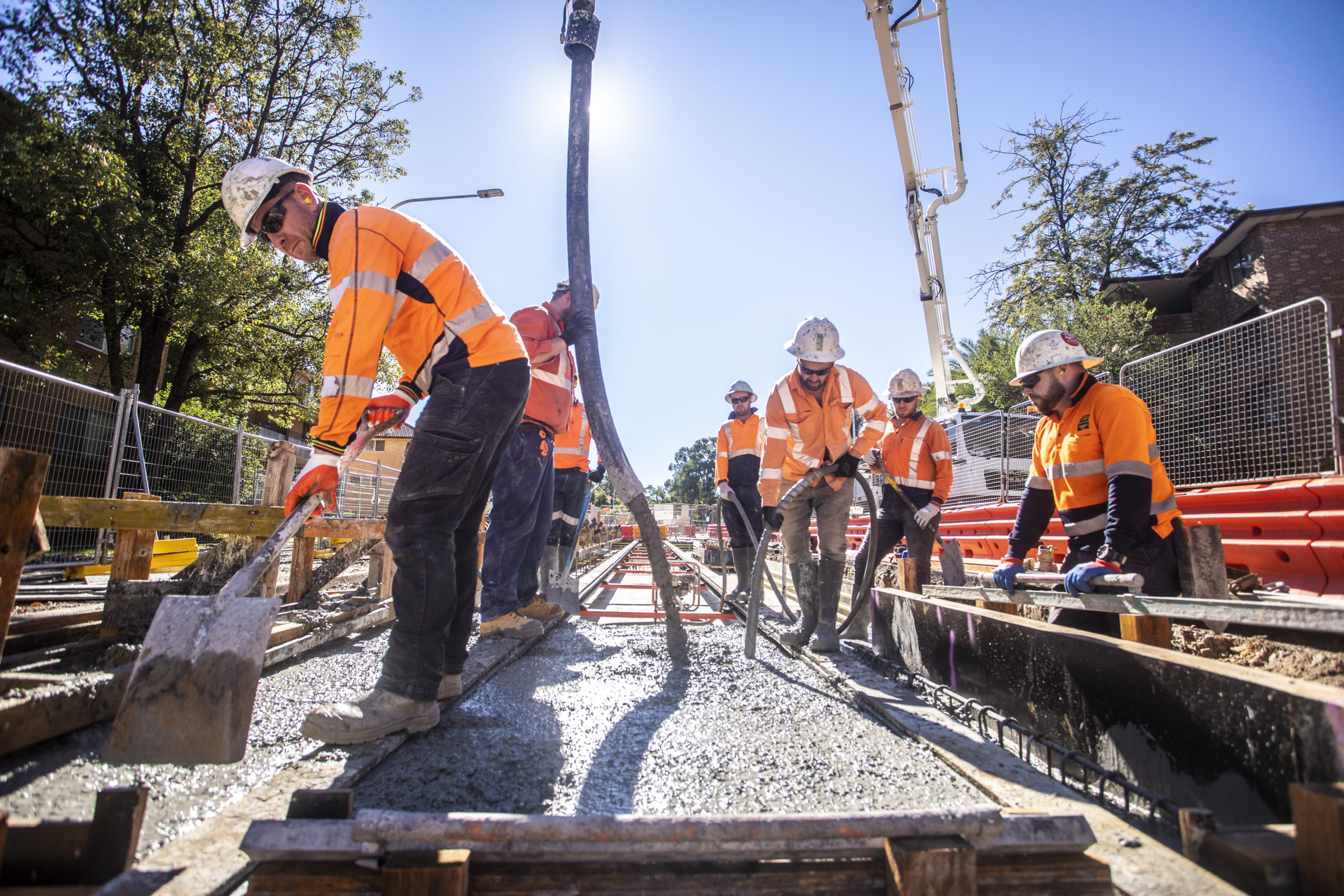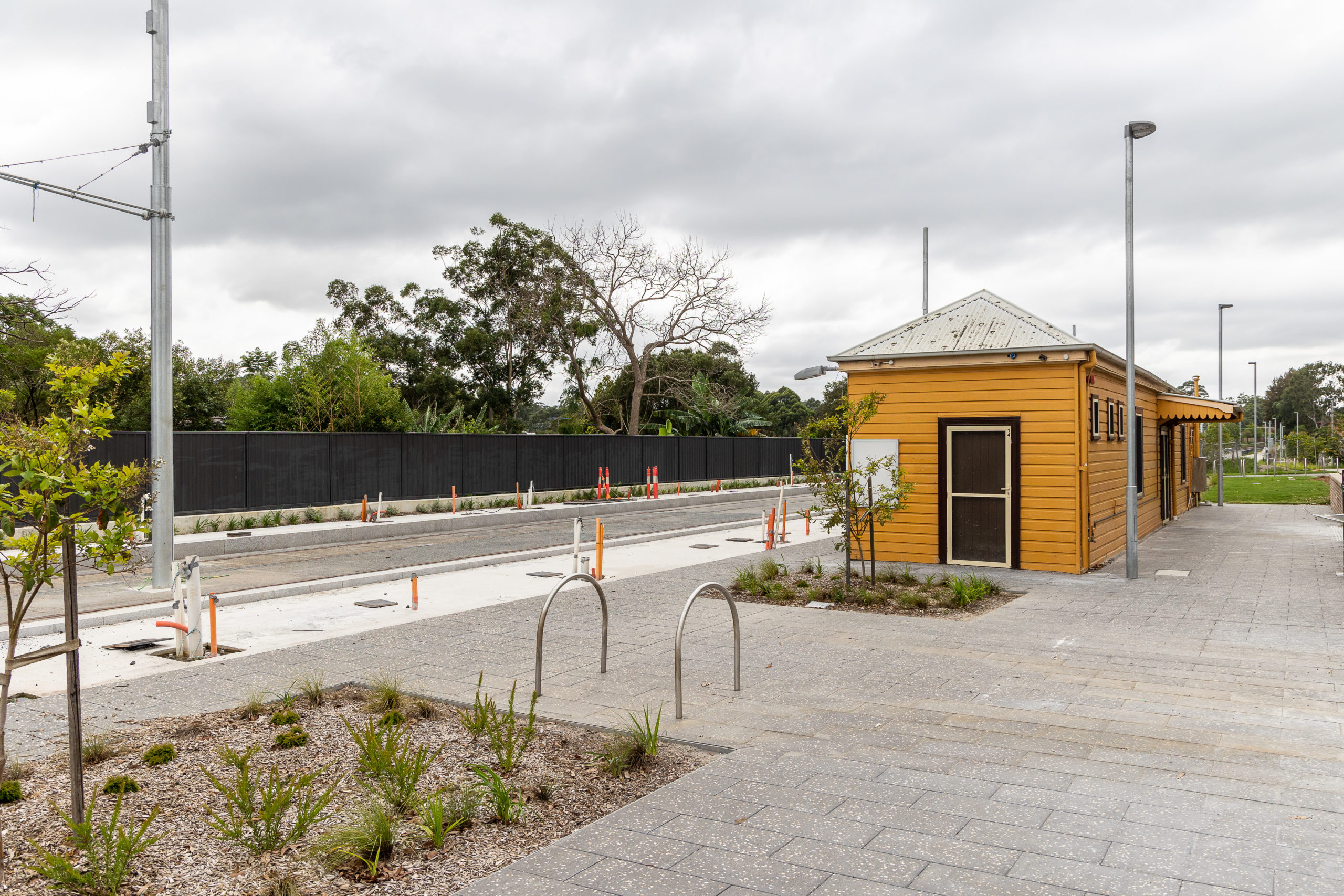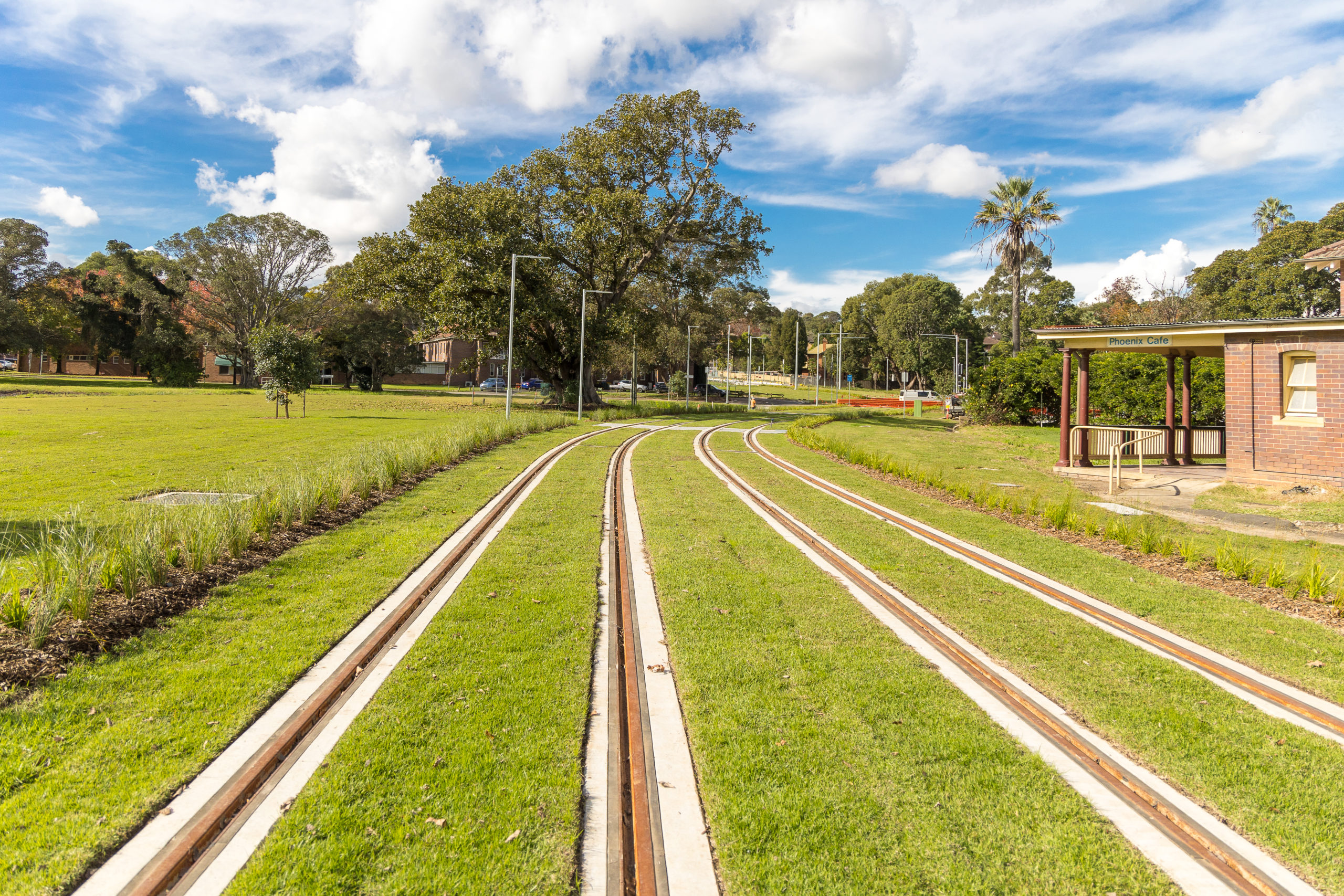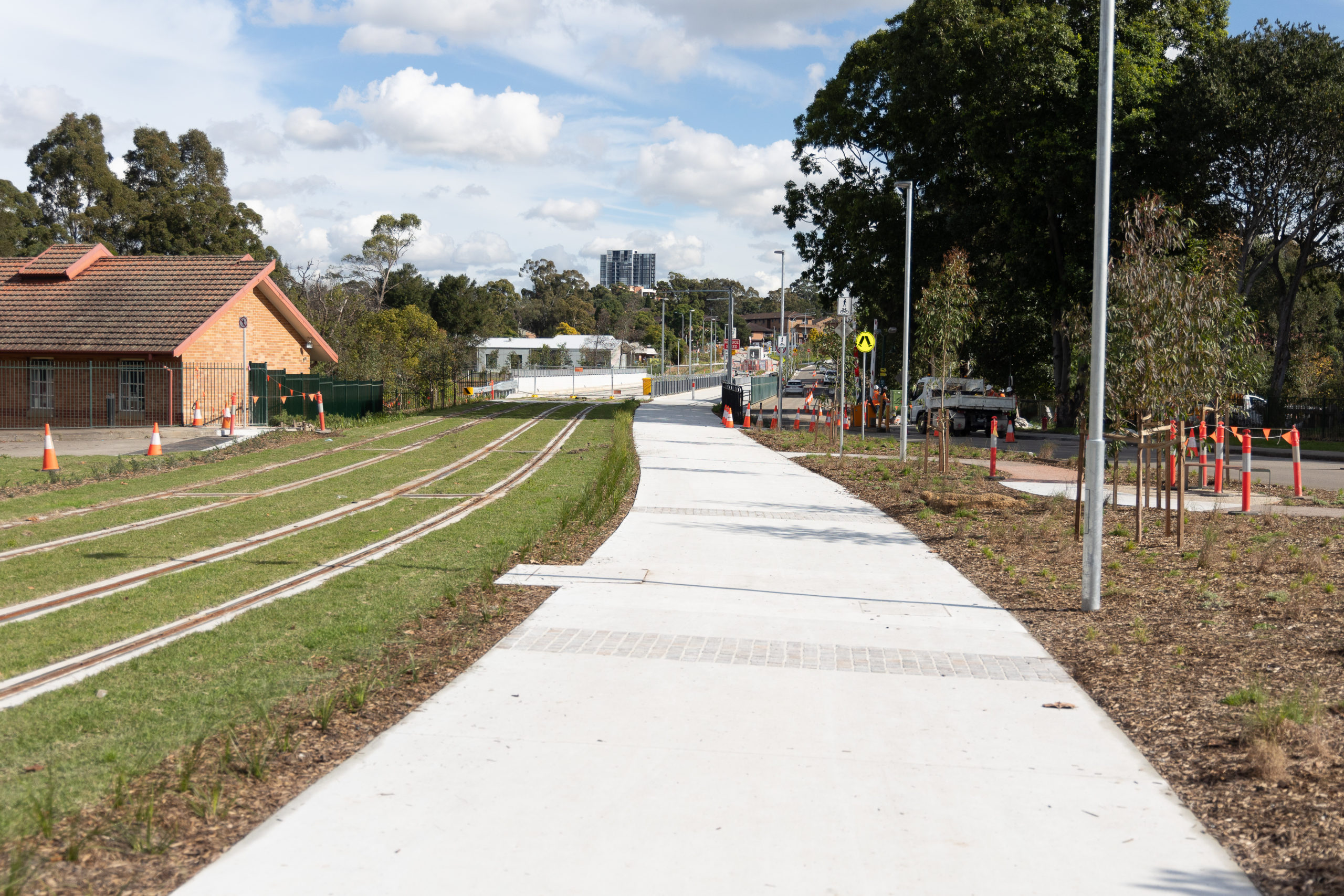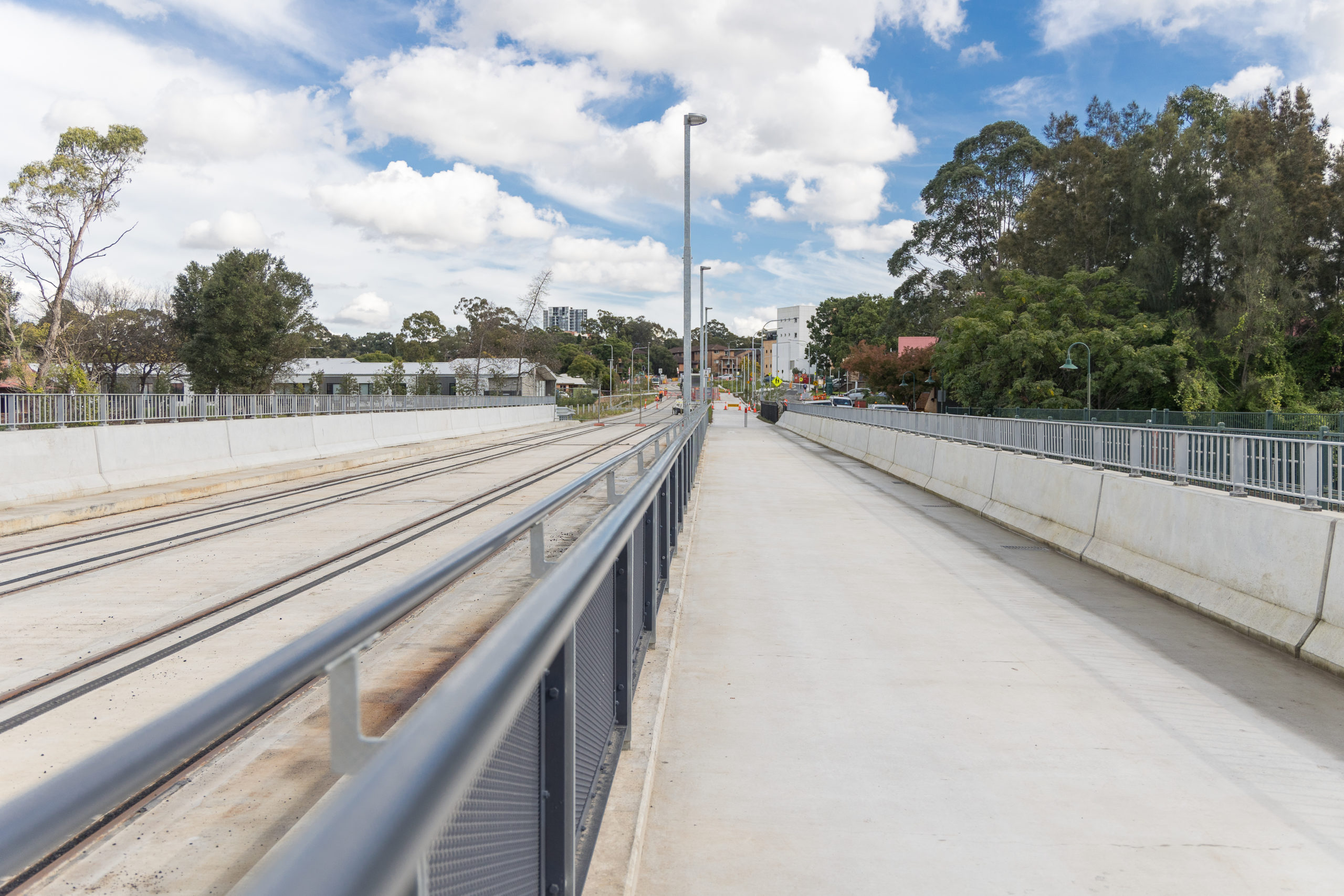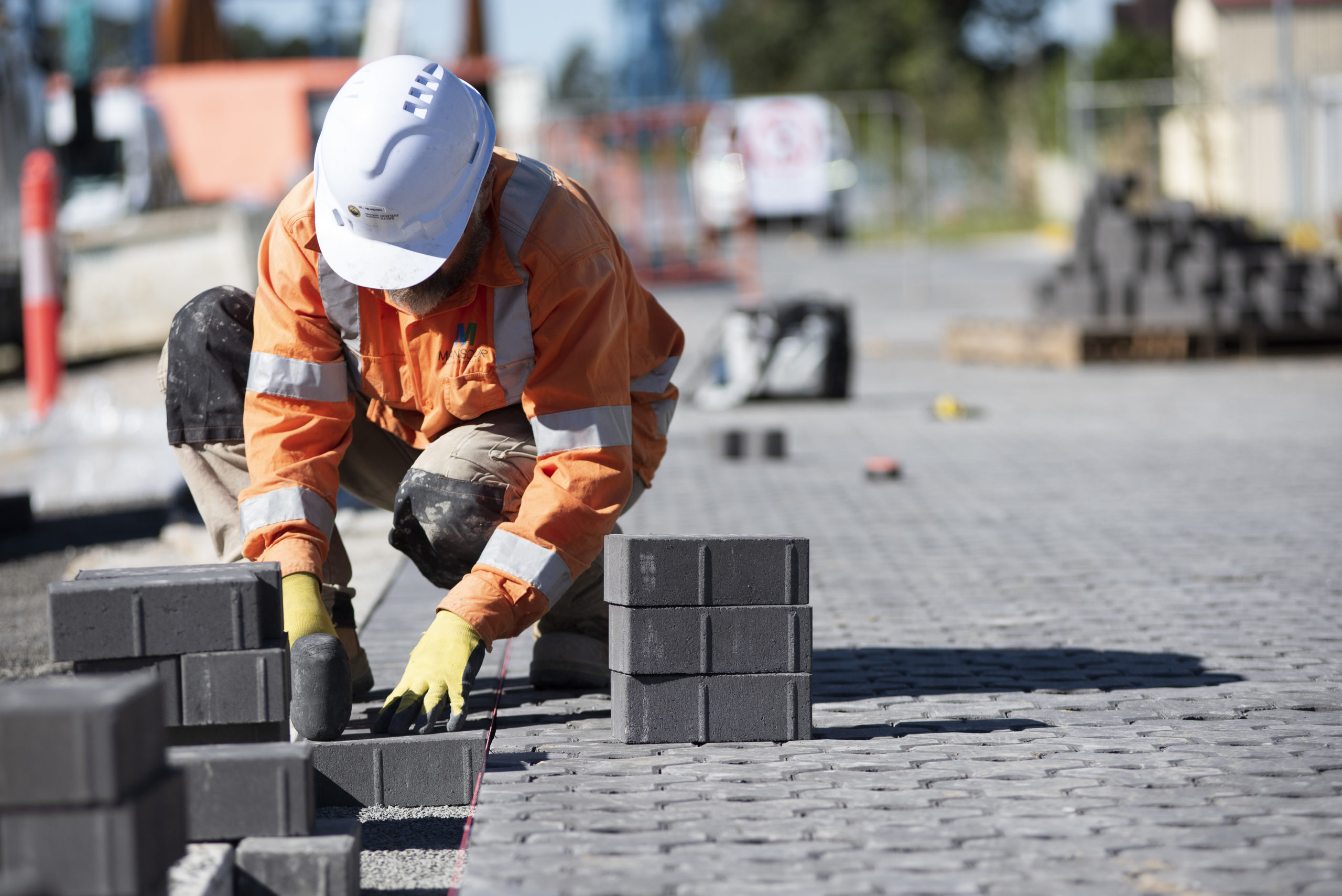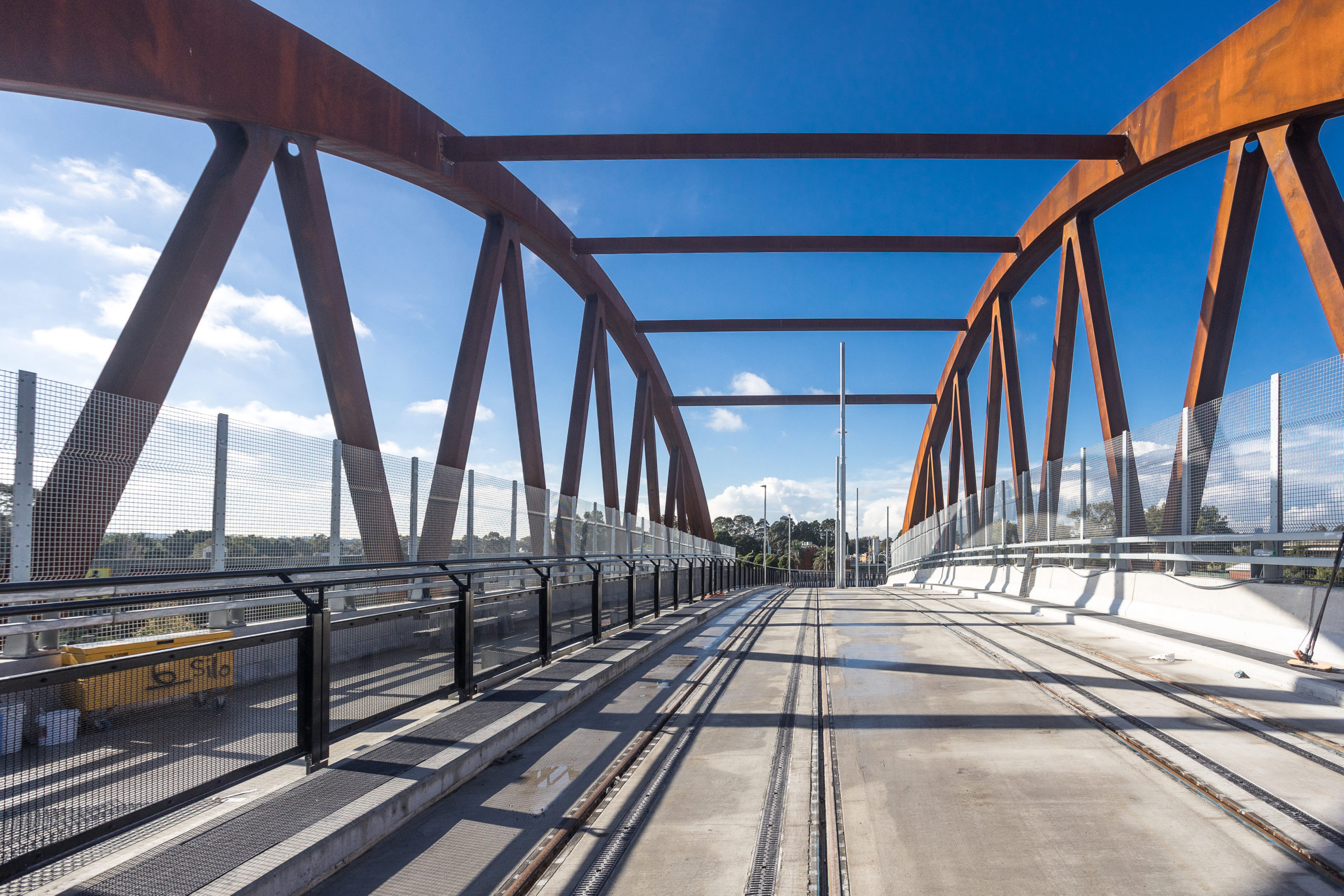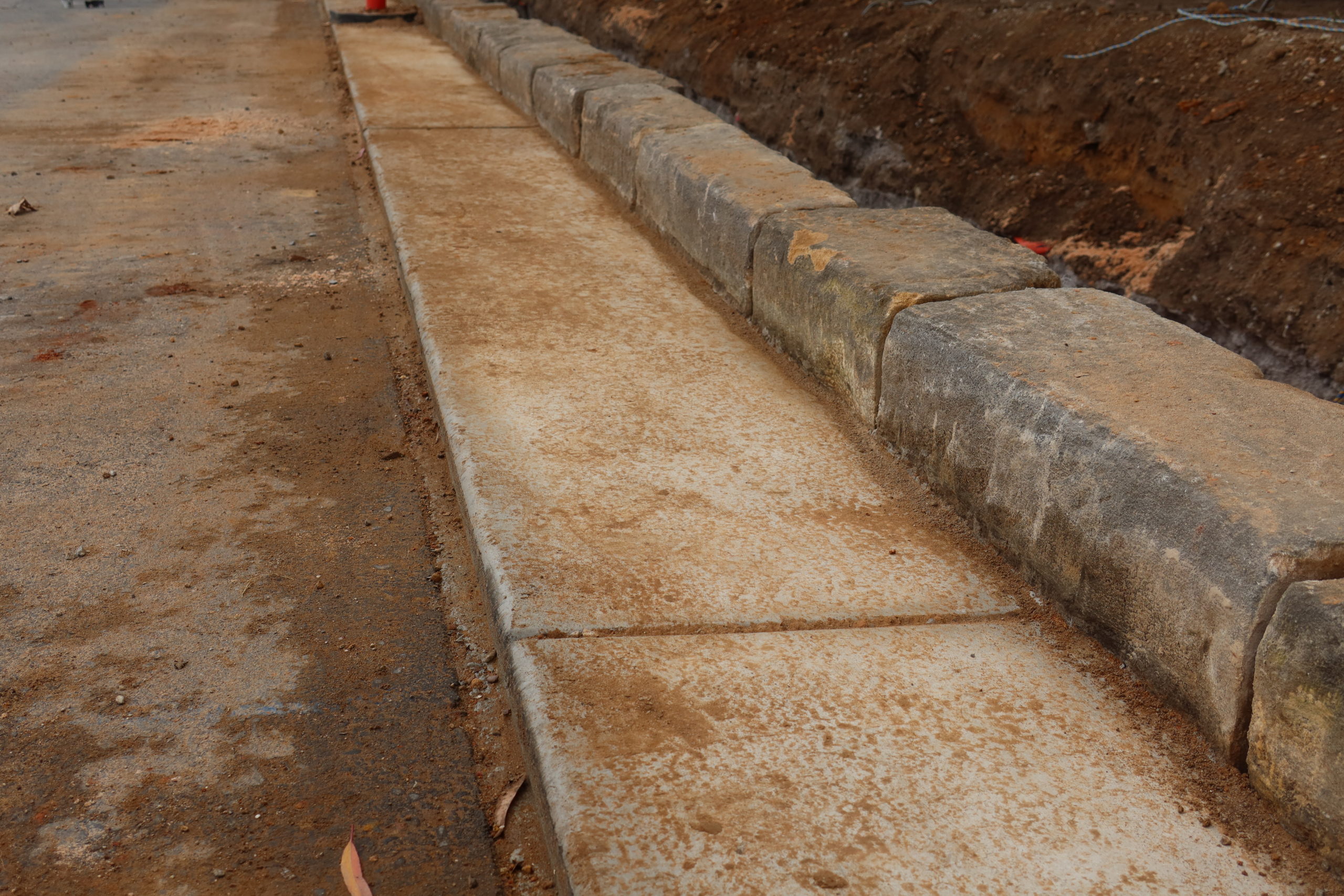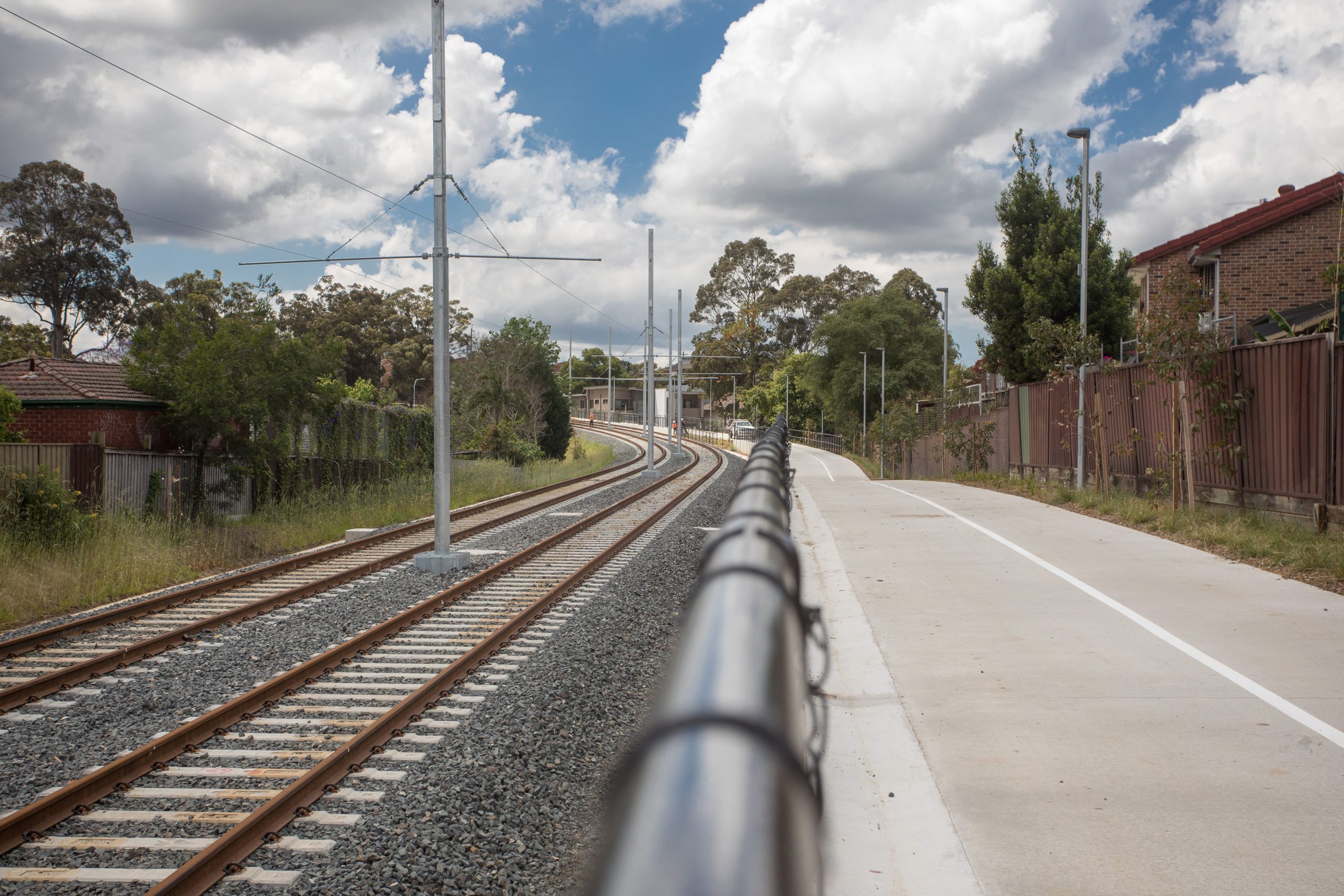Certified Score: 104 (v1.2 As-Built)
Description:
Parramatta Light Rail is one of the NSW Government’s major infrastructure projects being delivered to serve a growing Sydney. Parramatta Light Rail Stage 1 will connect Westmead to Carlingford via the Parramatta Central Business District (CBD) and Camellia. The project will create new communities, connect great places and help both local residents and visitors move around and explore what the region has to offer. The route will link Parramatta’s CBD and train station to a number of key locations, including the Westmead Health Precinct, Cumberland Precinct, CommBank Stadium, the Camellia Town Centre, the new science, technology and innovation museum Powerhouse Parramatta, the private and social housing redevelopment at Telopea, the Rosehill Gardens Racecourse and three Western Sydney University campuses. The Infrastructure Works is being delivered by Parramatta Connect, a CPB Contractors and Downer Joint Venture, and includes the design and construction of civil works, public domain and light rail infrastructure up to road level/top of rail and to the top of the concrete slab at stops, including provision of utility services (excluding high-voltage power supply and cabling for rail systems), and decommissioning of the T6 Carlingford Line.
Key Achievements:
The project has achieved outstanding outcomes through:
- Implementation of robust management and procurement systems that incorporate sustainable processes
- Thorough assessment of climate change risks and implementation of climate change adaptation measures
- Integration of significant energy, water and material reductions throughout the project’s lifecycle
- Excellent environmental management of emissions, pollution, waste and ecology
- Exceptional heritage management and monitoring ensuring heritage values are enhanced and leave a permanent legacy within the local community
- Delivery of meaningful stakeholder engagement with creative and innovative solutions
- Integration of best practice urban design principles into local areas
- Australian and State First Innovative solutions integrated throughout the design and construction of the project
- Workforce Development and Social Procurement Strategy which has achieved greater workforce diversity, upskilling of workers, engagement with social enterprises and aboriginal businesses, and provided opportunities for local communities.
Highlights:
The project has achieved an energy impact reduction of 33.8% with key initiatives such as the use of dimmer functions on LED luminaires; a water use reduction of 22% using a subsoil drip irrigation system with soil moisture sensors and a 28% material use reduction through re-use of heavy rail elements, MSF in concrete and recycled materials in concrete, asphalt, and aggregates. The cumulative impact of all the initiatives has achieved a carbon dioxide output reduction of over 76,000 tonnes.
The project’s robust management and governance systems have integrated exceptional sustainability processes leading to the achievement of full points in:
- 5 of 7 management credits
- all procurement credits and
- both climate change credits.
'People and Place' elements have been a key focus for the project due to its location within the highly dense urban and rich heritage environment of Parramatta, Sydney’s second CBD. Parramatta’s rich and varied history of Aboriginal and European significance has been respected in bespoke designs, developed in consultation with Heritage NSW, such as using a wire-free design for much of the alignment, thin resin-bound footpath pavements to avoid disturbing unmarked graves, avoiding unnecessary removal of heritage bridge abutments, lighting solutions to minimise visual clutter, and salvage/reuse of sandstone and bricks. Heritage interpretation included paving inlays, interpretive signage, landscaping and installation of an indigenous garden. The project has produced a high-quality urban realm finish that is sympathetic to the heritage and cultural fabric of the three distinct precincts.
Acknowledgements:
Australian First
An Australian First innovation has been achieved using a bespoke light rail boot within the light rail trackform designed by Trelleborg for 51R1 rail. The use of the light rail boot on the project provides a complete warranted system for rail resistivity, stray current and meets the high noise and vibration attenuation requirements needed for the surrounding urban environment. The light rail boot has a double-wide top, an innovation unique to the project within Australia, which prevents rail wear, allows for reduced maintenance issues across the life of the light rail system and minimises repair works or replacement.
State First
The Parramatta Light Rail will be the first light rail system within NSW to use Macro Synthetic Fibres (MSF) within concrete for the trackform. The use of MSF reduces the quantity of steel reinforcement required and increases concrete durability and performance, enabling efficient construction and mitigation of potential stray current issues.
State First
The Parramatta Light Rail will be the first light rail system within NSW to implement green track. The green track constitutes 10% of the alignment and will integrate the light rail alignment within the public domain contributing to noise reduction, urban cooling, and material reductions, leaving a lasting positive impact on significant and sensitive existing urban spaces.
The achievement of the Leading As-Built Rating has been the result of multiple stakeholders’ input including:
- Transport for NSW (TfNSW)
- The Design Consortium (WSP & Aurecon)
- The wider CPB Contractors and Downer EDI network
Testimonial:
The achievement of a Leading ISC As-Built Rating reflects the hard work carried out by the entire Parramatta Connect project team, along with Transport for NSW, to deliver social, economic, and environmental initiatives throughout the project lifecycle. The rating achieved provides validation of our commitment to sustainable infrastructure and a third-party assurance review of our sustainability performance.

